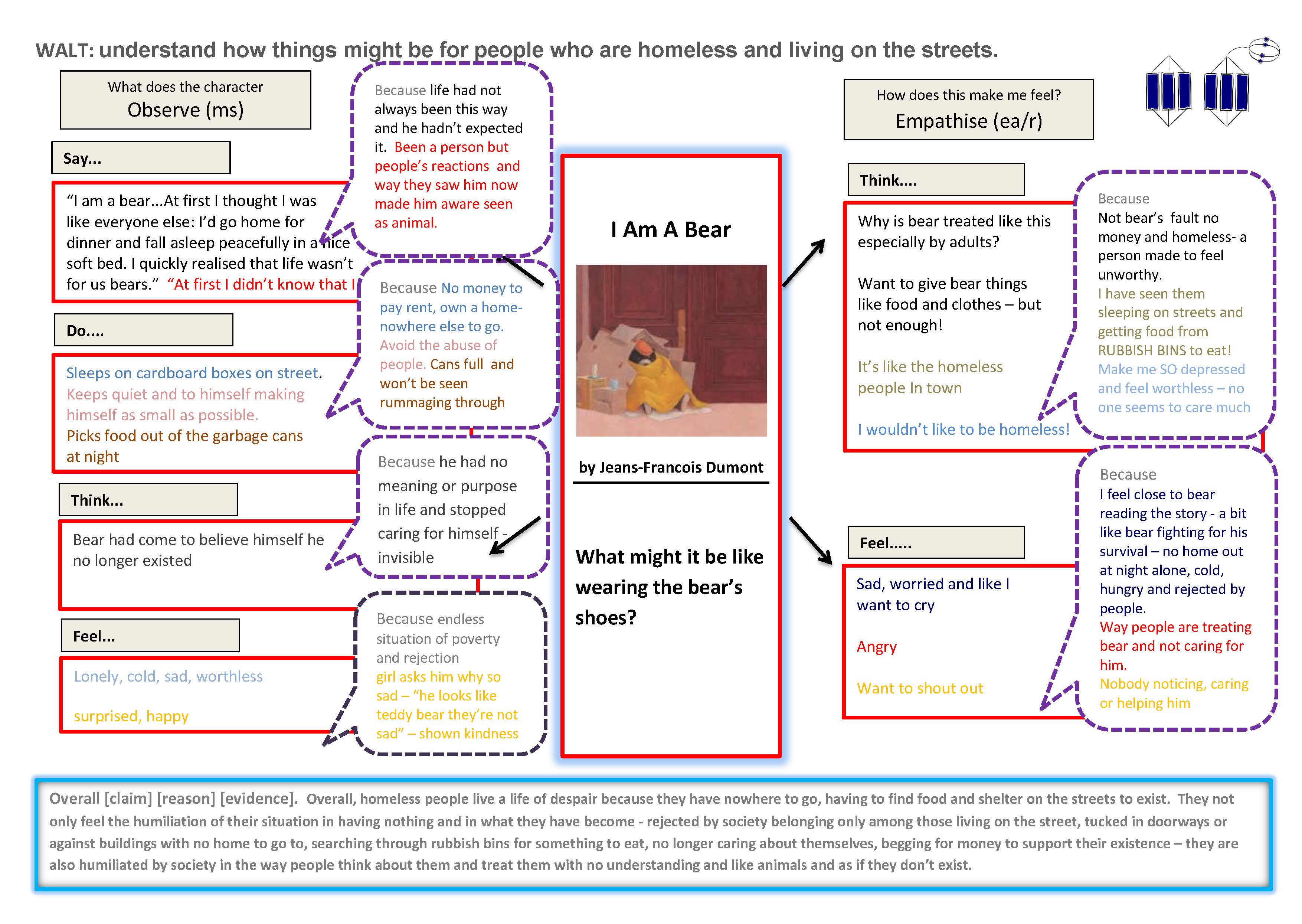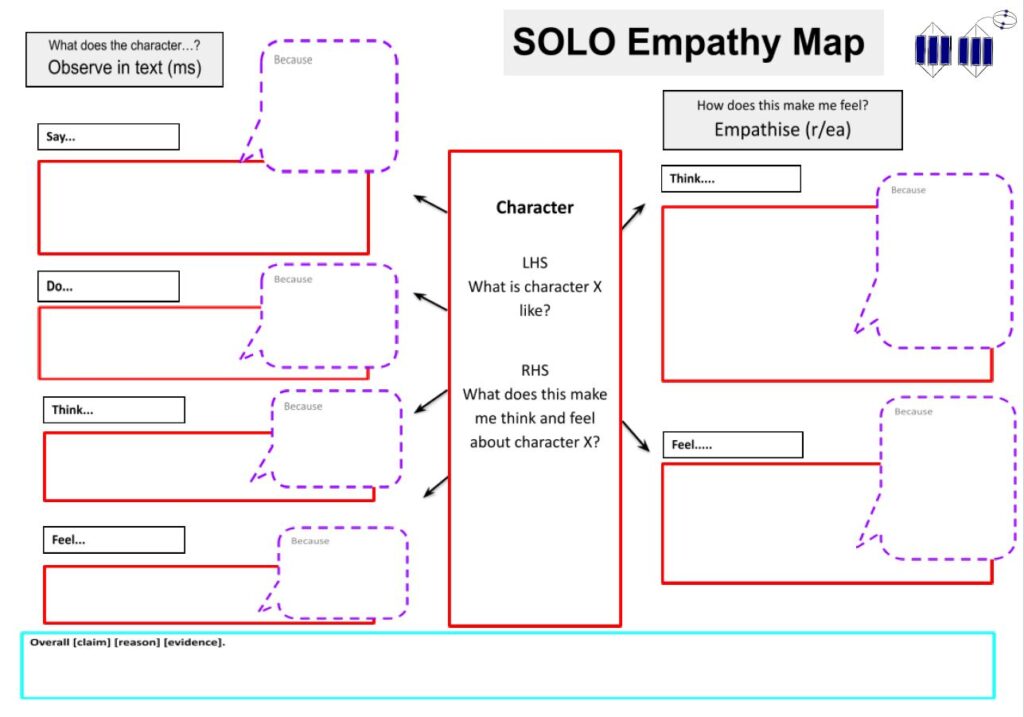‘Be kind, for everyone you meet is fighting a hard battle’*
Embed from Getty ImagesExhorting others to “be kind” is not helpful if we don’t take time to clarify what “being kind” is like.
Being kind is often used as a place holder for showing empathy (cognitive, emotional and compassionate). An observation that prompts questions like – How do you help students learn about empathy? How do you help students learn how to demonstrate empathy? What opportunities do you allow for students to both experience and demonstrate empathy?
I was lucky enough to see one approach to this when working with Christchurch teacher Joy Williams on the SOLO in Narrative Writing manuscript. Her students produced some deep insights and empathic responses using a SOLO writing template she developed to help students understand the complexity of someone who is not us – the other.
The SOLO template went through a number of iterations before we settled on the map that is featured in the new book** – it is called the HookED SOLO Empathy Map.

The SOLO map shows that to empathise is a 3-step thing. After students observe what others – SAY, THINK, DO or FEEL, they must:
- draw inferences from their observations (cognitive empathy) – a SOLO relational task
- reflect on what they infer and how it makes them feel (emotional empathy) – a SOLO extended abstract task
- act on their reflections (compassionate empathy) – a SOLO extended abstract task
Before students can learn to empathise, they must first “notice the detail” – observe to bring in ideas about what people SAY, THINK, DO or FEEL (a SOLO multistructural task).
Then, they must infer or explain why the person acts in this way (a SOLO relational task). They can make this inference (an educated guess) about the reasons from reading the text, observing the context for the behaviour, and or relating the behaviour to their prior experience or knowledge. When have I felt similar to what this person has described? When have I felt sad, anxious, euphoric, calm?
This step helps develop a student’s “cognitive empathy”. It is true that we can never really know why someone else is SAYing, THINKing, DOing and FEELing something. So this step is vulnerable to a student’s unconscious bias or “gut feelings”. They will learn that motivation is all too often misinterpreted and misrepresented in life.
Next the student steps away, from description and inference, and reflects on how this situation or event makes them feel (they express their “emotional empathy”). Reflection requires students to imagine how the other person feels. You could argue that this is a relational task but in my opinion the task sits more easily at an extended abstract level. This is because these “How did this (the author) make you feel”? type questions require deep thought or far extend – they represent a SOLO extended abstract task. How does this make you feel is nuanced – not the pre-structural race to express outrage on social media – a rush to hash-tagged judgement task.

It is at this stage that students are in a position to demonstrate “compassionate empathy”. This is when they move beyond the map and put their new understanding or knowledge of others to use in social action etc. They ask: What helped me when I felt similarly? Or: What would have helped me when I felt like this? What can I do?
As the social scientists like to say – it is time for “So what?” “Now what?”
*Quote attributed to 19th-century Scottish writer Ian MacLaren
**Hook, P., and Williams, J. (in press). SOLO Taxonomy and Narrative Writing. SOLO templates for student storytelling. Essential Resources Educational Publishers Limited. New Zealand.




